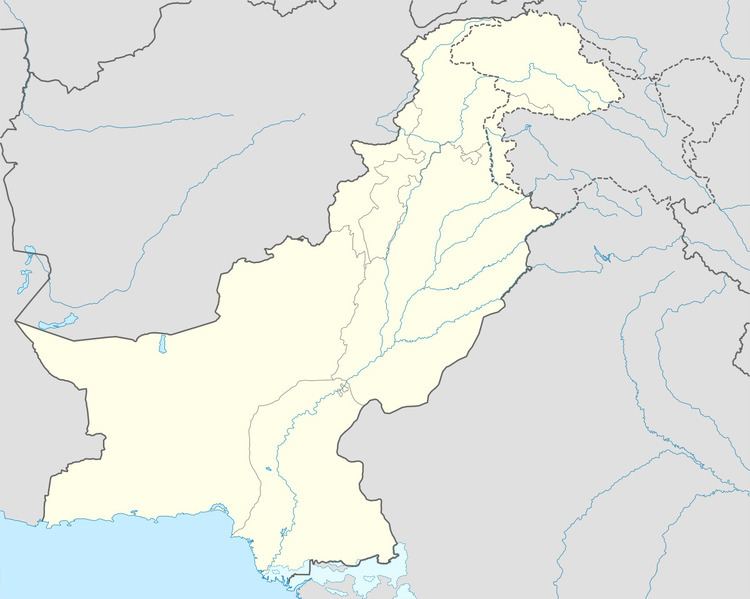Country Pakistan Time zone PST (UTC+5) Elevation 167 m Area code 044 | Tehsil Depalpur Calling code 044 Local time Wednesday 8:18 AM | |
 | ||
Weather 16°C, Wind NE at 8 km/h, 79% Humidity Neighborhoods Government Colony, Paracha Basti, Basti Imam, Mir Aman Ullah | ||
Dipalpur (also written as Depalpur) (Urdu: دِيپالپُور), is a city in Okara District of the Punjab and headquarters of Depalpur Tehsil. It is situated 25 kilometres from the district capital Okara on a bank of the Beas River in Bari Doab. The Tehsil is notable for being the site of several battles in the thirteenth and fourteenth centuries and is also associated with the history of the Bhatti clan. Punjabi is the most spoken language in the region.Begooka (Arian) Paracha, Pathan (Khan), Rao, Daula (Arian), Mian, Ramay (Arain), Wattoo, Klasson (Jatt), Bhatti, Joiya, Kharal Jutt,Chandor (Arian) are the main casts.Chandoor are the oldest dweller of the city.
Contents
Map of Depalpur, Pakistan
Historical architecture
In the past, Dipalpur was surrounded by a fortified wall, rising to the height of 25 feet and strengthened by a deep trench. When and by whom this wall was constructed is not known, but it was renovated, repaired and improved during the rule of Firoz Shah Tughluq and later by Abdur Rahim Khan-e-Khanan, who was the governor during the time of Akbar. Firoz Shah Tughluq constructed a grand mosque and palaces. He also excavated a canal from the river Sutlej to irrigate gardens around the town.
Wide and airy tunnels linked the royal residential quarters inside the fort to the adjoining gardens outside. There were 24 burgs (musketry holes) on the fortification wall, 24 mosques, 24 bavlis (ponds) and 24 wells at the town's peak. The trench, ponds and tunnels have been filled in, but in some places the location of the trench can still be defined. Most of the wall has been razed. Two of the four massive gateways with pointed arches also exist though they are badly damaged and their wooden doors have vanished. Later coats of cement have marred the original architecture of the gateways.
Hindu monastery
Besides doors with decorated latches, Jharokhas, bay windows and cut brick works, the most noticeable feature inside old Dipalpur is the monastery of Lal Jas Raj, a guru much venerated by the local people.
According to the famous legend, Lal Jas Raj was the young son of Raja Dipa Chand, the founder of Dipalpur. He sank into the earth due to a curse by his stepmother Rani Dholran. Raja Dipa Chand constructed this monastery in the memory of his son. Today, the chamber is dilapidated, the doors are jammed and a stairway is used for storage. The structure itself is crumbling. According to local residents, there used to be a grand annual "mela" held here. It was also used by Hindus as a place to perform the Sardukahr (head-shaving ritual) until the partition, but "nobody comes anymore".
Inn
Another notable structure in the old section of Dipalpur is a saray (inn) near the monastery of Lal Jas Raj. It was a spacious building with airy rooms on four sides, a big courtyard in the centre and four arched entrances. The inn, like most of the older structures in town, is now in a state of disrepair. It has been divided and subdivided so many times by successive occupants that the original shapes are obscured. Even the verandas have been converted to create rooms.
Saints
Many Muslim saints have come to preach in this area. Hazrat Bahawal Haq commonly known as Bahawal Sher Qalandar came from Baghdad and settled in the village of Patharwall near Dipalpur. The saint constructed a hujra (small living room) and a mosque outside the village. His grandson Hazrat Shah Muqeem continued his mission. The village came to be known as Hujra Shah Muqeem. This is the place mentioned in the famous Punjabi love story Mirza Saheban, although there is no historical evidence that Jati Sahiba (Mirza Sahiba) came here and prayed that "The streets should desert when where my lover Mirza roams about".
The Mughal Emperor Akbar, along with his son Saleem and royal entourage, stayed in Dipalpur when he came to pay homage to Hazrat Farid Ganj Shakar in 1578. Akbar named the corridor Bari Doab by combining the syllables of the names of the two rivers, Beas and Ravi, that bounded the area. Baba Guru Nanak also stayed in Dipalpur for some time. The ruins of a Gurudwara mark the place.
Muslim saint named as Saayi Abdul Razaq stayed in Dipalpur and later on he started his volunteer activity for local people and after his death he was buried in city. Now, his death place is known as Razaqia Darbar.
